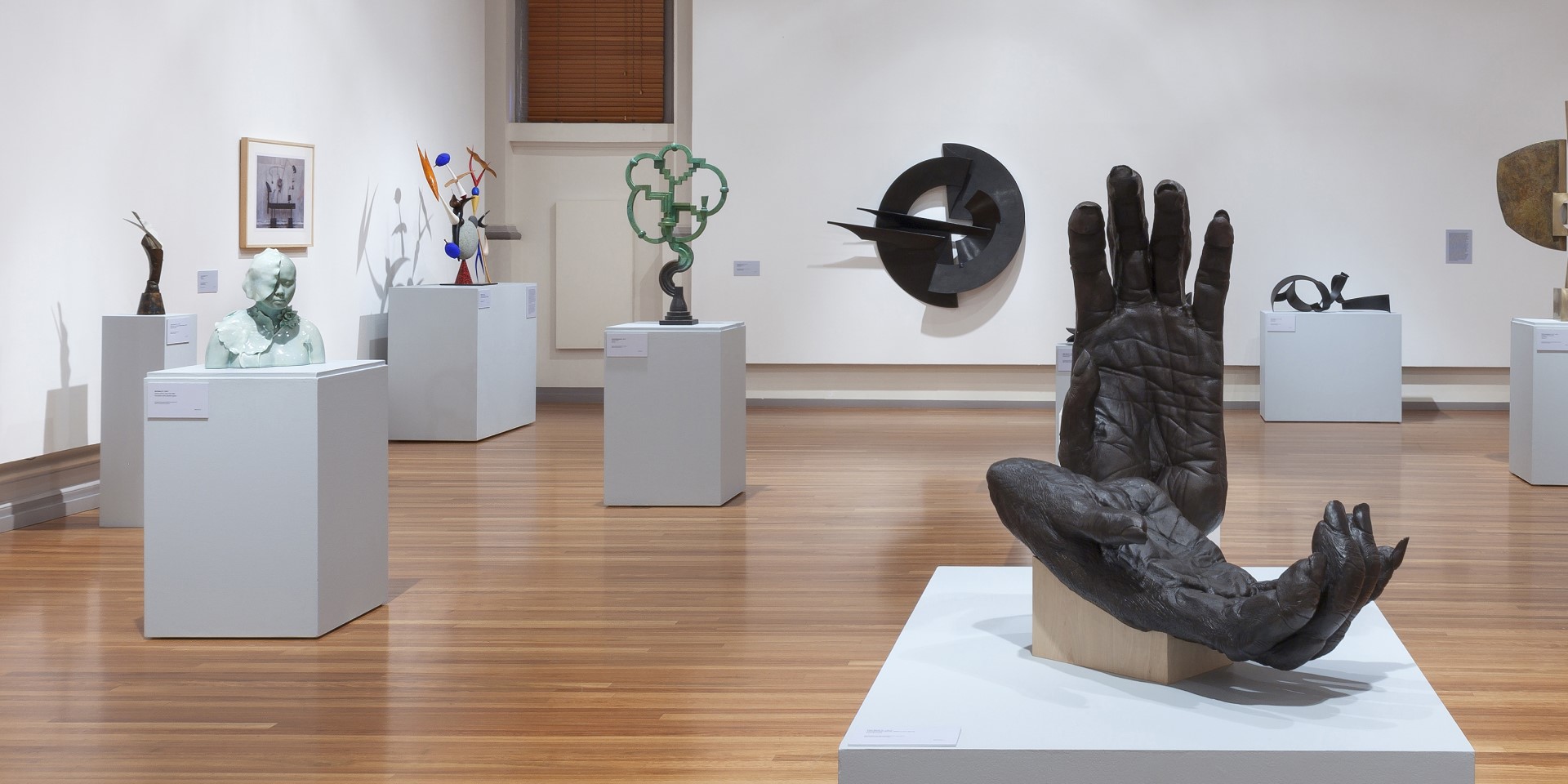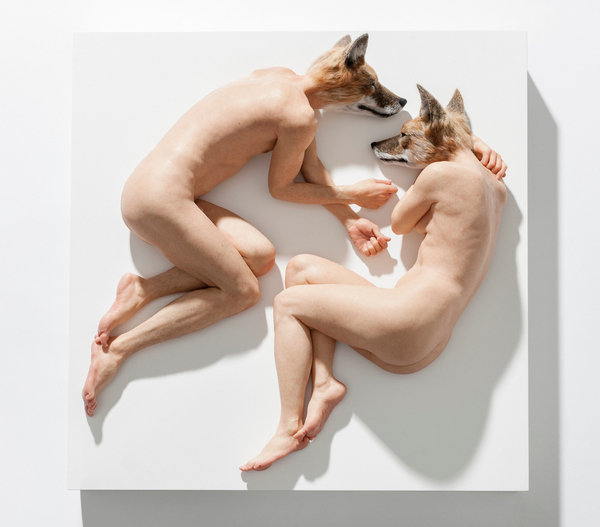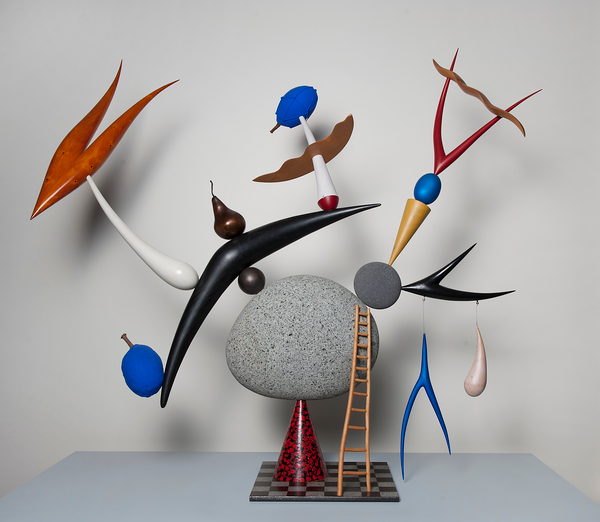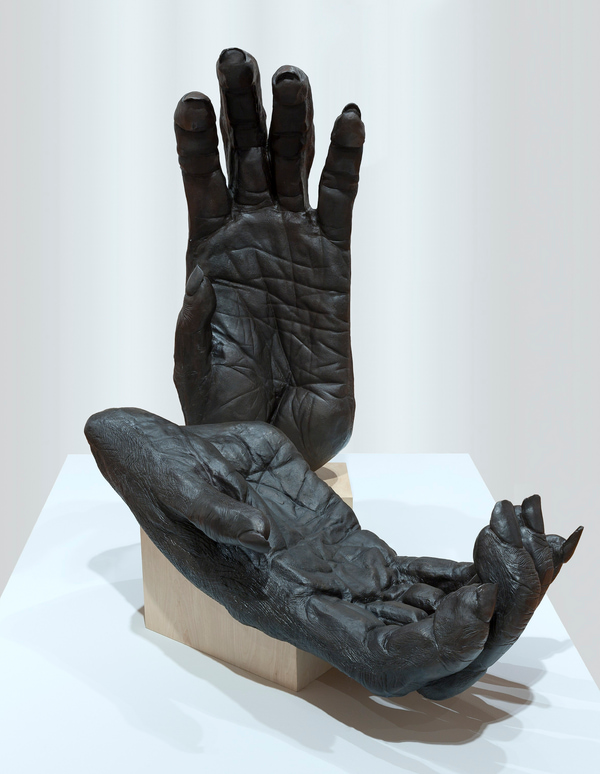
Culture Quiz: RMIT Art Collection
The RMIT Art Collection is an important part of RMIT Culture. The Collection reflects the university’s commitment to fostering inspiration and creativity amongst emerging and prospective artists.
The works housed within the Collection tell the story of RMIT’s ethos and its commitment to the creative endeavours of staff, students, and practicing artists.
Come back next week to test your knowledge on Design Hub Gallery, nestled within the iconic Building 100.
Quiz
1. How long has RMIT been acquiring artworks?
a) over 60 years
b) over 80 years
c) over 100 years
d) over 120 years
d) Over 120 years, since RMIT’s establishment in 1887.
The Art Collection encompasses some of Australia’s finest examples of modern and contemporary art. It features a wide variety of media, showcasing the stylistic evolution of art within RMIT and Australia. Read more about its history online.
2. As the Collection has been growing for many decades, how many works of art make up RMIT’s Art Collection?
More than 2300 from a wide breadth of media, including sculpture, photography, painting, drawings, metalsmithing and new media. You can find some of the work throughout RMIT’s campuses. The works are often loaned to be exhibited in places across the globe.
3. Sam Jinks’ Unsettled Dogs is comprised of many materials including some biological matter. What is this material?
a) hair
b) fingernails
c) skin
d) foliage

a) hair. Jinks’ piece is comprised of silicone, pigment, resin, hair and fur. It was purchased through the RMIT Art Fund in 2012 and has been displayed in various exhibitions since its acquisition.
Sam Jinks
Unsettled Dogs, 2012
Silicone, pigment, resin, hair and fur
23 x 63.5 x 63.5 cm
Purchased through the RMIT Art Fund, 2012
RMIT University Art Collection
4. Which abstract artist and mosaicist played a significant role in having the importance of building the Art Collection recognised?
a) Napier Waller
b) Lindsay Edward
c) Mirka Mora
d) Pamela Irving
b) Lindsay Edward. Edward was the head of the Art Department at RMIT during the 1970s and emphasised the importance of the growing collection. Under his guidance over five years, RMIT purchased important works by leading practitioners with the intention to make contemporary art more accessible to staff and students.
5. Which artist created the series If Only Carl Knew, playfully referring to an American sculptor’s previous works?
a) Carl Andre
b) Augustine Dall’Ava
c) Maria Fernanda Cardoso
d) Ema Shin

b) Augustine Dall’Ava. This series was a reference to American sculptor Carl Andre, who was known for his minimalist constructions. Each of the works within Dall’Ava’s series uses a square steel plate that once belonged to Andre, designed to juxtapose the styles of the two artists.
Augustine Dall’Ava
If Only Carl Knew No 29, 1994
Painted wood, natural wood, painted and natural stone, painted seed pods, granite, bronze, steel and linen thread
100.5 x 117 x 35.5 cm
Purchased through the RMIT Art Fund, 2010
RMIT University Art Collection
6. RMIT Art Collection’s recent acquisition Me & You (2019) is a sculpture by Sanné Mestrom that feels particularly pertinent in the current social climate of isolation. What is Mestrom’s work exploring?
Emotional and physical connections through the lens of modernist art. Me & You (2019) is a personal reflection on arts practice and history, while simultaneously serving as a universal study of relationships. Mestrom is particularly interested in the Modernist movement and how it has shaped both her personally, and culture more broadly.
7. What is the name of the crosshatching technique that is principally used by artists native to Arnhem Land?
Rarrk – which is typically produced using cured bark on wood board. This technique is featured in David Yirwala’s Kunapipi (Sacred & Secret) (c. 1965), which is held within the RMIT Art Collection. You can see it on our Instagram here. Yirwala was a man of high ritual status who sought to use his position to promote Kuninjku culture among non-Aboriginals. He was a prolific painter and introduced a number of innovations in Arnhem Land board painting.
8. Earlier in the year, RMIT Culture’s Unpacked series took viewers on an art tour, showcasing some of the works held within the Collection. Where are Lisa Roet’s Chimpanzee Hands located?
a) Building 100
b) Bowen Street
c) Swanston St Library
d) Federation Square

b) Bowen Street. RMIT’s Art Collection displays some of its works across campus, including Roet’s Chimpanzee Hands. This piece was fabricated locally in Northcote and acquired by the Art Collection in 2012. You can take a guided tour of the collection online.
Lisa Roet
Chimpanzee Hands, 2007
Bronze
Right hand 103 x 44 x 23 cm (irreg.); left hand 97 x 42 x 25 cm (irreg.)
Purchased through the RMIT Art Fund, 2012
RMIT University Art Collection
- PEG
Acknowledgement of Country
RMIT University acknowledges the people of the Woi wurrung and Boon wurrung language groups of the eastern Kulin Nation on whose unceded lands we conduct the business of the University. RMIT University respectfully acknowledges their Ancestors and Elders, past and present. RMIT also acknowledges the Traditional Custodians and their Ancestors of the lands and waters across Australia where we conduct our business - Artwork 'Luwaytini' by Mark Cleaver, Palawa.